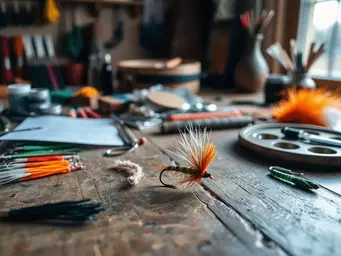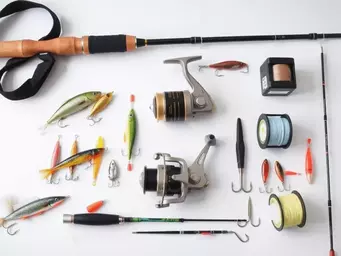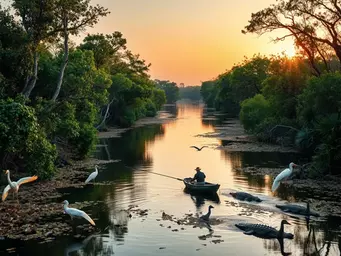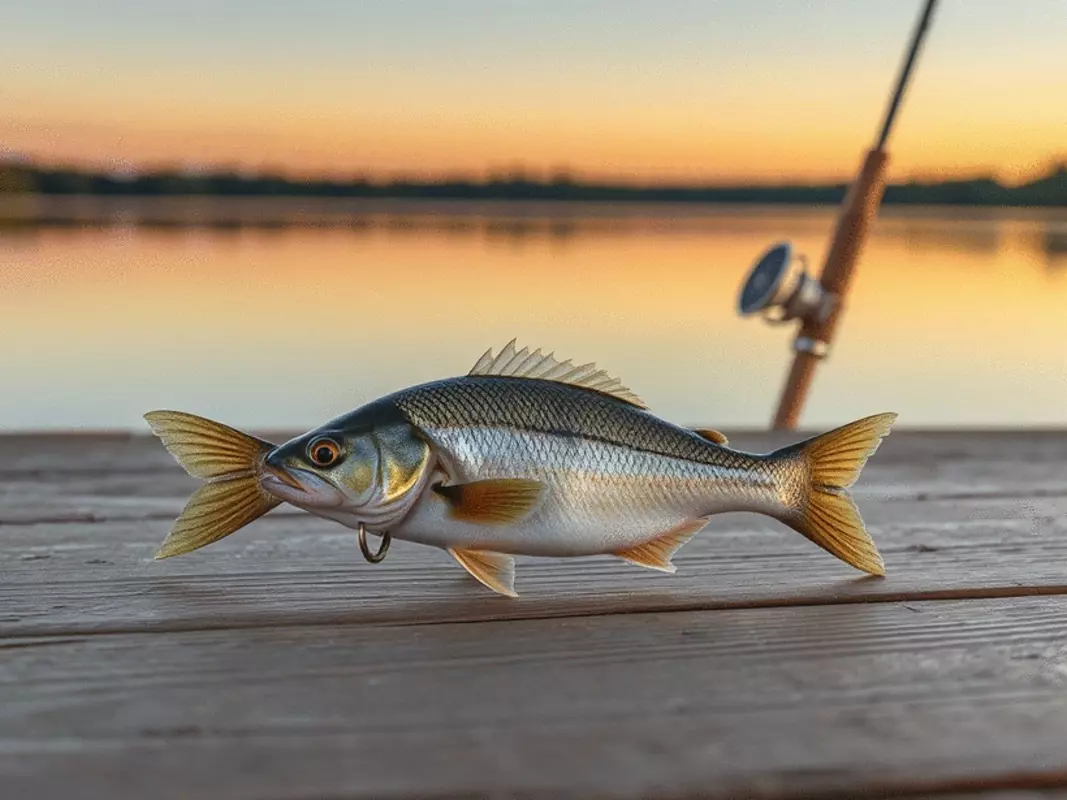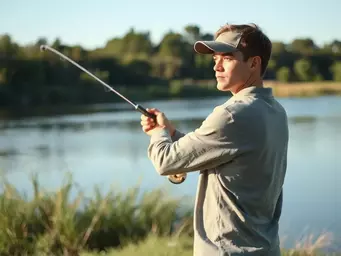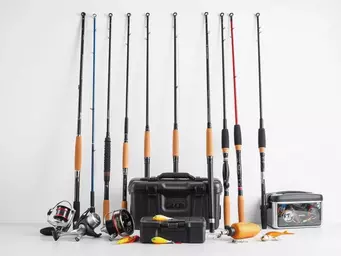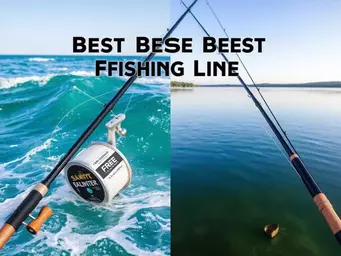Flies for Trout Fishing

Have you ever considered how the flies you use can make or break your fishing experience? Tying your own flies not only enhances your connection to the sport but also allows you to adapt to the unique preferences of local trout. Let's explore the transformative benefits of mastering this skill.
What You Will Learn
- Personalization: Tailor your flies to match the specific hatches and conditions in your local waters.
- Cost-Effective: Save money in the long run by creating your own flies instead of purchasing commercial ones.
- Skill Development: Gain a deeper understanding of fish behavior and improve your overall fishing abilities.
- Enhanced Effectiveness: Custom flies that mimic local insects can significantly increase your catch rates.
- Unique Patterns: Stand out with custom designs that aren’t available in stores, leading to more bites.
- Community Connection: Engage with other anglers through shared tips, local patterns, and workshops.
- Sustainable Practices: Learn about local fishing regulations to ensure responsible fishing and conservation efforts.
Key Aspects of Fly Tying for Trout Fishing
The following visual highlights the key benefits of custom-tied trout fishing flies and the specific preferences of different trout species, crucial for effective fly tying.
Benefits of Custom-Tied Flies
- ✓Enhanced effectiveness: Mimic local insects.
- ✓Improved catch rates: Custom designs lead to more bites.
- ✓Unique patterns: Stand out with original creations.
Rainbow Trout Preferences
- ●Brightly colored flies.
- ●Attractors.
- ●Nymphs.
Brown Trout Preferences
- ●Natural colors.
- ●Smaller patterns.
- ●Imitations of local insects.
Brook Trout Preferences
- ●Brightly colored dry flies.
- ●Especially during hatching seasons.
Understanding the Essentials of Fly Tying for Trout Fishing
As an avid angler, I can't stress enough how tying your own flies can transform your fishing experience. Not only does it add a personal touch, but it also connects you more deeply with the art of fishing. When you create your flies, you're tailoring them to the specific conditions and preferences of the trout in your local waters. It’s about understanding the dance between the fish and the flies, which makes every cast feel even more rewarding!
Moreover, fly tying allows for a level of creativity and customization that you simply won't find in store-bought options. With each fly you craft, you get to experiment with colors, materials, and techniques, making your fishing adventures uniquely yours! So, let’s dive into why tying your own flies can enhance your fishing experience.
Why Tying Your Own Flies Enhances Your Fishing Experience
Tying your own flies isn’t just a practical skill; it’s a journey into the heart of the fly-fishing community. You can connect with other anglers, share tips, and discover local patterns that work best for specific waters. For many, it becomes a relaxing and meditative practice that complements the thrill of fishing. Learning to tie flies can also deepen your understanding of aquatic entomology, which is crucial for effective fly selection.
- Personalization: You can tailor flies to match local hatches or specific fishing conditions.
- Cost-Effective: Creating your own flies can save money over time compared to buying commercial options.
- Skill Development: Enhances your understanding of fish behavior and improves your overall fishing skills.
Additionally, when you land a catch on a fly you’ve tied yourself, the sense of accomplishment is unmatched. There's something magical about knowing you have played a significant role in that moment!
Key Benefits of Custom-Tied Trout Fishing Flies
Custom-tied flies can provide numerous advantages over store-bought options. For example, local trout might have specific preferences based on their environment, which means you can adapt your flies accordingly. This flexibility is crucial when fishing various bodies of water throughout the season. Resources like library guides on fly fishing can offer valuable insights into different fly patterns and their effectiveness.
- Enhanced effectiveness: Flies that mimic local insects are often more successful in enticing fish.
- Improved catch rates: Custom designs can lead to more bites and ultimately, more fish in your cooler.
- Unique patterns: Stand out on the water with flies that no one else is using!
By tying your own flies, you become an active participant in the fishing process, rather than a passive observer. You’ll find that your connection to the sport deepens with every fly you create!
Exploring Different Trout Species and Their Preferences
Understanding the different species of trout and their preferences is essential for successful fly selection. Each species can have unique feeding habits and environmental preferences that influence the types of flies that work best. For instance, Rainbow Trout tend to favor brightly colored flies, while Brown Trout might go for more natural, earth-toned options. A comprehensive introduction to fly fishing techniques often covers these species-specific preferences in detail.
- Rainbow Trout: Bright colors, attractors, and nymphs work well.
- Brown Trout: Natural colors, smaller patterns, and imitations of local insects.
- Brook Trout: Brightly colored dry flies, especially during hatching seasons.
Knowing these preferences will help you select the right materials and techniques when tying your flies, increasing your chances of landing that trophy trout! It’s all about matching your efforts to the specific needs of the fish you’re pursuing.
Interactive Poll: Your Fly Tying Journey
As you explore the world of fly tying, we want to know—what aspect of fly tying excites you the most? Is it the creativity of designing unique patterns, the challenge of mastering new techniques, or the satisfaction of catching fish with your own flies? Share your thoughts below!
Practicing Your Fly Tying Techniques
When it comes to fly tying for trout fishing, practice makes perfect! Regularly dedicating time to hone your skills can transform your experience on the water. It's not just about replicating patterns; it's about developing your style and gaining confidence in your abilities. I remember when I first started tying my own flies—every new technique felt daunting, but with consistent practice, I began to create flies that truly worked for me!
Experimentation is equally important. Trying out different materials and patterns can lead to unexpected successes. Don't shy away from making mistakes; they're often the best teachers. So grab your materials and let your creativity flow!
Importance of Regular Practice and Experimentation
As with any skill, the key to becoming proficient in fly tying is regular practice. Setting aside specific times each week to tie flies can help build muscle memory and improve your technique. I suggest the following tips for effective practice sessions:
- Focus on one technique at a time—this could be a specific knot or pattern.
- Keep a journal of your progress, noting what works and what doesn’t.
- Experiment with various colors and materials to see their effects on your flies.
- Challenge yourself by recreating complex patterns you admire.
Remember that every time you sit down at your tying station, you’re not just crafting flies; you’re enhancing your overall fishing knowledge and preparing for future adventures on the water!
Recommendations for Resources and Communities to Improve Skill
To elevate your fly tying skills, I recommend tapping into resources and communities that share your passion. Here are some fantastic avenues to explore:
- YouTube Channels: Channels like 'The New Fly Fisher' and 'Fly Tying 101' offer step-by-step tutorials.
- Online Forums: Platforms like 'Fly Tying Forum' can connect you with seasoned tyers willing to share tips.
- Local Workshops: Look for workshops at your nearest tackle shop or community center—these can provide hands-on learning.
- Social Media Groups: Join Facebook groups or Instagram hashtags dedicated to fly tying to share your work and get feedback.
Being part of a community can provide motivation and inspiration. Plus, the exchange of ideas will surely spark your creativity and lead to new techniques!
Understanding Fishing Regulations for Sustainable Practices
As we delve deeper into the art of fly tying, it's essential to remember the responsibilities that come with our passion for fishing. Understanding local fishing regulations ensures that we practice sustainable fishing. Make sure to check:
- The specific regulations for catch limits and sizes in your area.
- Local rules on designated fishing seasons for trout.
- Best practices for catch and release to help maintain fish populations.
By following these regulations, we can contribute to the conservation of our waters and ensure that future generations of anglers can enjoy the thrill of trout fishing just as we do!
Frequently Asked Questions about Fly Tying for Trout Fishing
- Q: Why should I tie my own flies instead of buying them?
- A: Tying your own flies offers personalization, allowing you to match specific local hatches and conditions, which can significantly increase your catch rates. It's also cost-effective in the long run and deepens your connection to the sport.
- Q: What are the main benefits of using custom-tied flies?
- A: Custom-tied flies provide enhanced effectiveness by mimicking local insects, lead to improved catch rates with unique designs, and allow you to stand out on the water with original patterns not found in stores.
- Q: Do different trout species prefer different types of flies?
- A: Yes, different trout species have distinct preferences. For example, Rainbow Trout favor brightly colored flies, Brown Trout prefer natural colors and smaller patterns, and Brook Trout are attracted to brightly colored dry flies, especially during hatching seasons.
- Q: How can I improve my fly tying skills?
- A: Regular practice and experimentation are key. Focus on one technique at a time, keep a journal of your progress, and experiment with various materials and colors. Utilizing resources like YouTube tutorials, online forums, local workshops, and social media groups can also significantly enhance your skills.
- Q: Why is it important to understand fishing regulations when fly tying?
- A: Understanding and adhering to local fishing regulations ensures sustainable fishing practices. This includes knowing catch limits, size restrictions, designated fishing seasons, and practicing catch and release, all of which contribute to the conservation of fish populations for future generations.
Recap of Key Points
Here is a quick recap of the important points discussed in the article:
- Personalization: Crafting your own flies allows you to match them to local conditions and trout preferences.
- Cost-Effective: Tying your own flies can save money in the long run compared to purchasing commercial options.
- Skill Development: Regular practice enhances your understanding of fish behavior and improves your overall fishing skills.
- Custom-Tied Advantages: Custom flies can lead to higher catch rates and unique patterns that stand out.
- Species Preferences: Different trout species have specific preferences—tailor your flies accordingly for better success.
- Community Engagement: Joining fly tying communities and utilizing resources can significantly improve your skills and creativity.
- Sustainable Practices: Always adhere to local fishing regulations to ensure the conservation of fish populations.
